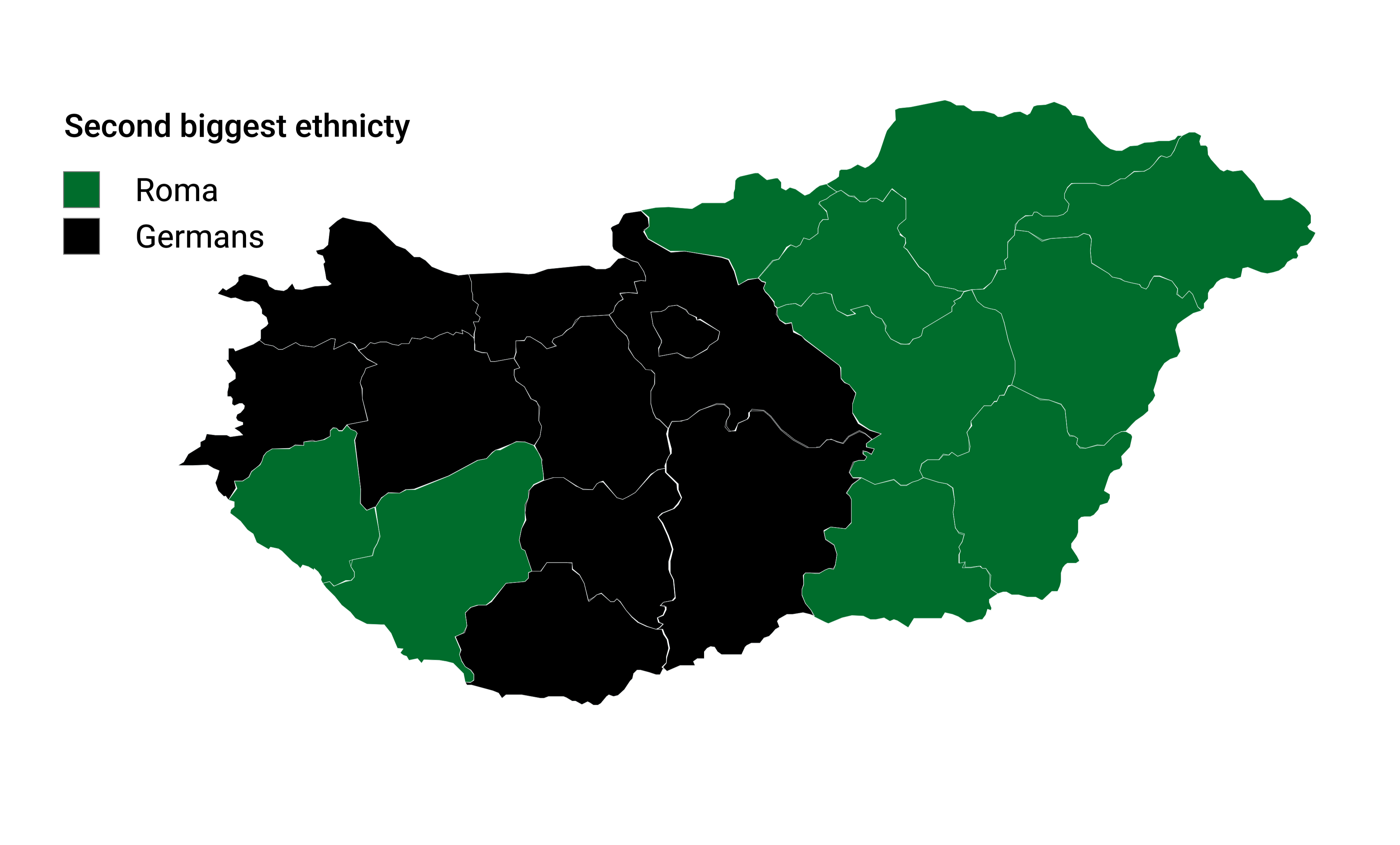Map of Second Largest Ethnic Group in Hungarian Counties


David Chen
Data Visualization Specialist
David Chen is an expert in transforming complex geographic datasets into compelling visual narratives. He combines his background in computer science ...
Geographic Analysis
What This Map Shows
This map provides a clear visualization of the second largest ethnic groups residing in various counties across Hungary. It highlights the rich tapestry of ethnic diversity that shapes the cultural landscape of the country. In Hungary, ethnic identity is a significant aspect of social and cultural life, and this map allows us to see not just the majority population but also the vibrant communities that contribute to Hungary's multicultural identity.
Deep Dive into Ethnic Diversity in Hungary
Hungary, located in Central Europe, is a nation with a complex demographic structure. The population is predominantly Hungarian, but it is also home to a variety of ethnic groups, each contributing to the nation’s cultural heritage. The second largest ethnic groups vary by county and include Romani, Slovak, Romanian, and German communities.
The Romani people, for instance, are one of the most notable ethnic minorities in Hungary. Official estimates suggest there are around 300,000 to 800,000 Romani in Hungary, making them the largest minority group. However, what’s fascinating is how their population density and distribution can vary significantly from one county to another. In counties like Borsod-Abaúj-Zemplén, the Romani community represents a substantial segment of the population, influencing local culture, music, and traditions.
Another significant group is the Slovaks, primarily found in the northern regions bordering Slovakia. The presence of Slovak communities emphasizes the historical ties and cultural exchanges between Hungary and its neighbors. Their traditions, language, and festivals add another layer to Hungary’s cultural mosaic.
Interestingly, the Romanian minority, particularly in areas near the Romanian border, also plays a crucial role in Hungary's ethnic landscape. Their influence is seen in culinary practices, language, and even in local governance in some areas where their numbers are significant. Germany has also left its mark on Hungarian society, with German-speaking communities concentrated in specific regions that preserve their language and heritage.
Overall, understanding these ethnic distributions is not just about demographics; it relates to the historical migrations, socio-economic conditions, and cultural exchanges that have shaped Hungary over centuries. It also highlights how the narrative of national identity is woven into the experiences of these diverse groups.
Regional Analysis
Examining the counties, we can observe distinct patterns of ethnic group distribution. For instance, in the northern part of Hungary, counties like Nógrád and Heves showcase a strong presence of Slovak communities, reflecting historical connections and migration patterns. This region’s culture is enriched by Slovak traditions, which are celebrated in local festivals and events.
On the other hand, counties such as Bács-Kiskun and Csongrád-Csanád are notable for their significant Romanian populations. The cultural impact here is evident in local customs and even in the dialect spoken by some residents, which incorporates Romanian influences.
In contrast, the southeastern counties, including Szabolcs-Szatmár-Bereg, have a larger proportion of Romani people, showcasing an entirely different cultural landscape. The Romani influence is particularly visible in music, dance, and art, which have become integral to the cultural identity of these areas.
Moreover, the presence of smaller ethnic groups, such as the Croatians and Serbs, in regions like Baranya adds to the complexity of Hungary’s ethnic composition. Each of these groups brings unique traditions and perspectives that enrich the local culture.
Significance and Impact
Understanding the distribution of ethnic groups in Hungary is crucial for several reasons. Firstly, it fosters a deeper appreciation for the country’s cultural diversity. As Hungary continues to navigate its identity in an increasingly globalized world, recognizing the contributions of minority groups becomes essential.
Secondly, this map is significant for policymakers and social scientists. The presence of various ethnic groups can impact local governance, education, and social services. For instance, areas with large Romani populations may require tailored educational programs to address specific challenges and cultural contexts.
Finally, the ongoing cultural exchanges and interactions among these ethnic groups are vital for social cohesion. In a world where ethnic tensions can arise, promoting understanding and respect is fundamental for peaceful coexistence. As Hungary moves forward, the interplay between its majority and minority populations will shape the nation’s future, making the understanding of ethnic diversity not just an academic exercise but a societal necessity.
In conclusion, the second largest ethnic group in Hungarian counties isn't merely a statistic; it reflects the rich historical and cultural tapestry of a nation that has been shaped by its diverse populations. As we continue to engage with these communities, we can better understand the complexities of identity, belonging, and the shared future of Hungary.
Visualization Details
- Published
- October 26, 2025
- Views
- 20
Comments
Loading comments...